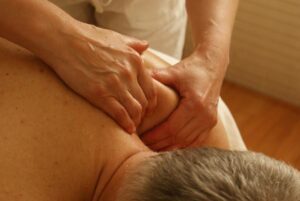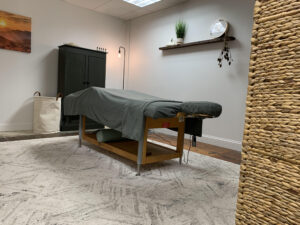You stretch, foam roll, maybe even pop an occasional ibuprofen. You try your best but the pain keeps coming back. Why? Because the problem may not be where you think it is!
What feels like joint pain or muscle tension is often caused by something deeper: trigger points.
At Massage336 in Columbia, PA, I integrate trigger point therapy into many sports massage sessions. especially for clients from York and nearby areas who are active, athletic, or in pain. This technique is one of the most powerful tools I use to relieve pain, improve function, and help clients move more freely.
Let’s explore how trigger point therapy works, who it helps, and why it might be the solution you didn’t know you needed.
What Are Trigger Points?
Trigger points are small, hyperirritable knots in your muscle tissue that form due to overuse, trauma, poor posture, or stress. They’re often painful when pressed and can refer pain to completely different areas of the body.
Common examples:
- A trigger point in your neck may cause a headache
- A knot in your glute can refer pain down your leg, mimicking sciatica
- A tight point in your calf might cause foot or Achilles pain
These points disrupt muscle function, limit mobility, and create discomfort that massage clients often describe as “nagging,” “deep,” or “dull and achy.”
What Causes Trigger Points to Form?
There’s no single cause, but trigger points often form when muscles become overloaded or under-recovered.
Contributing factors include:
- Repetitive movements (e.g., running, lifting, typing)
- Muscle imbalances or poor posture
- Emotional stress (tight shoulders, clenched jaw)
- Acute injury or microtrauma
- Nutritional deficiencies or dehydration
Once a trigger point forms, it creates a feedback loop. This loop then reduces circulation, increases tension, and makes it even harder for the muscle to release on its own.
How Trigger Point Therapy Works
Trigger point therapy is a hands-on technique that involves applying sustained pressure to the trigger point until it softens and releases.
During a session:
- I assess posture, range of motion, and pain patterns
- I locate trigger points through palpation (manual touch)
- I apply specific pressure using fingers, knuckles, or tools
- Clients may feel a mild ache or referred pain during release
- After release, I use gentle stretching or myofascial techniques to restore function
While not always relaxing, this targeted approach is incredibly effective at getting to the root of chronic pain and movement issues.
Benefits of Trigger Point Therapy
Trigger point therapy helps restore optimal function and reduce pain throughout the body. Here’s how it helps active clients and athletes:
- Releases chronic tension in overused or tight muscles
- Improves flexibility by restoring natural muscle length
- Reduces referred pain that shows up far from the source
- Restores muscle balance for more efficient movement
- Prevents overuse injuries by addressing dysfunction early
Unlike a general massage, this method is focused on specific spots.
Conditions Trigger Point Therapy Can Help
You don’t need to be an athlete to benefit. Clients often come in for one thing only to realize that the pain stems from a trigger point.
Some common conditions treated include:
- Headaches and migraines
- Low back pain
- Neck and shoulder tightness
- Plantar fasciitis
- Tennis/golfer’s elbow
- Sciatica-like pain
- IT band syndrome
- Shin splints
If you’re dealing with recurring pain or tightness that hasn’t responded to stretching, chiropractic care, or traditional massage, trigger point therapy may be the missing piece!
What Does It Feel Like?
Most clients describe it as a “good hurt.” You may feel:
- A dull ache or pressure at the trigger point
- Sensations that travel (referred pain)
- A sense of muscle “melting” or releasing
- Soreness that lasts a day or two, followed by relief
You’re always in control. I’ll work with your comfort level and adjust pressure as needed.
How Often Should You Get It?
Frequency depends on your goals:
- For chronic issues: Weekly or biweekly for 2–4 sessions, then reassess
- For active maintenance: Once every 3–4 weeks during training
- For injury recovery: As part of a broader rehab and massage plan
Pair it with hydration, mobility work, and proper movement, and the results go even further.
Let’s Find and Fix the Root Cause
If you’re tired of chasing pain without finding relief, it’s time to work smarter. Trigger point therapy is a corrective tool to help you feel, move, and perform better.
At Massage336, I’ll help you uncover the hidden causes of tension and guide you toward lasting relief.




